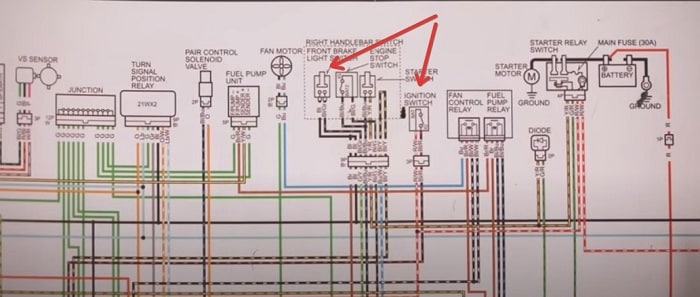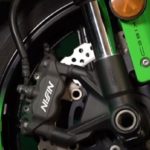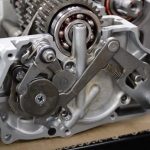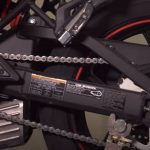The kill switch is there as a safety net, but is there any harm in using it in non-emergency situations?
Some folks think that using the kill switch often will melt wiring, wear out the switch, or confuse the ECU or harm the engine. If you’re one of those folks, you can breathe a sigh of relief because you can use the kill switch as often as you want without harming your motorcycle in any way.
In fact, it doesn’t matter if you use the key or the kill switch to turn off your motorcycle, or even the side stand, for that matter.
What’s the right way to turn off your motorcycle? With the ignition switch or with the kill switch first, and is there any harm in doing it one way or the other?
Maybe you’ve never thought about this topic because, frankly, it’s pretty silly.
Or maybe it keeps you up at night because you’re worried that using the kill switch is going to hurt your bike somehow.
To kill switch, or not to kill switch, that is the question. It’s something you guys have been asking about for quite a while now, so we’re diving in.
So if your motorcycle already has an ignition key, why does it have a kill switch as well?
How Does a Kill Switch Work?
The kill switch sometimes called the engine cutoff switch or even the emergency switch, is a redundant safety feature.
It’s a quick, easy way to turn off your motorcycle, and you can use it without removing your hands from the controls like you have to do with the key.
All motorcycles have a kill switch, and they’re all in the same location.
You can thank the US Department of Transportation for that. Kill switches are mandatory in America, and since the USA is such a huge motorcycle market, all the manufacturers conform.
All three switches are part of the same circuit that includes your bike’s battery and the ignition system.
Don’t Believe me? Take a look at this wiring diagram. Indicated with the red arrows are the engine stop switch and the ignition switch? The schematics look pretty similar, right?

The terminals even have the same name. You’ve got an IG for ignition and BT for the battery. Functionally these two switches are exactly the same.
When you turn the key, the contact plate and the bottom of the switch rotates and bridges two wires supplying power to the rest of the bike.
It may be in a different place on your bike, but the principle is the same.
But some of you may say that you shouldn’t use the kill switch because the owner’s manual warns against it.
Does Leaving The Kill Switch on Kill The Battery?
If you look at the Triumph Street Twin manual, it says that the stop switch should only be used for emergencies and that ordinarily, the key should be used to turn off the motor.
There’s even a warning about potential damage to electrical components.
That wording seemed pretty strong to me, so I decided to follow up with Triumph for clarification.
They explained that the concern is that if the rider uses the kill switch to turn off the bike, they might forget to turn off the key and then drain down the battery.
Even if the manual uses the word emergency, there’s nothing more to it than being concerned about battery life.
The only other explanation I can come up with for why there’s any misconception about the kill switch has to do with carbureted bikes.
Some riders aren’t in the habit of using the kill switch, so if the kill switch gets accidentally flipped, they’re going to keep trying to start their bike, but it won’t fire, and eventually, it’s going to get flooded.
When they finally realized that the kill switch had been flipped, the bike is really hard to start, and they assume that the kill switch did something bad to their bike.
In fact, the kill switch is doing exactly what it’s designed for, and the rider just didn’t realize it.
This article’s takeaway is that you have absolutely nothing to worry about If you want to use that kill switch.
The only thing you need to remember to do is to turn off the key, so you don’t drain down your battery.
What Happens If You Hit The Kill Switch While Riding?
If you accidentally hit the kill switch while you were riding, all that would happen is that your bike would immediately start to slow down, as if you had run out of gas. It would not be dangerous in its self, but if you were traveling at 70mph on a freeway, you would need to make sure you could safely get yourself out of danger.
Related Posts
- 4 Things To Wear To Stay Warm On Your Motorcycle In Winter
 Most of us here ride to work every day all year round, and we have lots of personal experience when it comes to taming the elements.
Most of us here ride to work every day all year round, and we have lots of personal experience when it comes to taming the elements. - How To Clean Your Motorcycle In 5 Easy Steps
 We all love a clean and shiny motorcycle but knowing which cleaning products to buy can sometimes be a little daunting, and so too can be the method to clean your motorcycle.
We all love a clean and shiny motorcycle but knowing which cleaning products to buy can sometimes be a little daunting, and so too can be the method to clean your motorcycle. - How Does A Manual Transmission Work On A Motorcycle
 For most people, their motorcycle transmission is one of the most mysterious parts of their bike. How does it work, and why do we shift down into first, but then
For most people, their motorcycle transmission is one of the most mysterious parts of their bike. How does it work, and why do we shift down into first, but then - How Sprockets Affect Speed on Motorcycles And Why
 It doesn’t matter if you’re a racer; if you’re just into trails riding your dual-sport, your bike can be geared differently to your performance needs. Not only on a dirt
It doesn’t matter if you’re a racer; if you’re just into trails riding your dual-sport, your bike can be geared differently to your performance needs. Not only on a dirt - 3 Reasons Why Wheelies Are Bad For Your Motorcycle
 Wheelies are super fun, and we all know that wheelies are one of the purest forms of joy known to humanity, but they can be dangerous. Wheelies are bad for
Wheelies are super fun, and we all know that wheelies are one of the purest forms of joy known to humanity, but they can be dangerous. Wheelies are bad for


